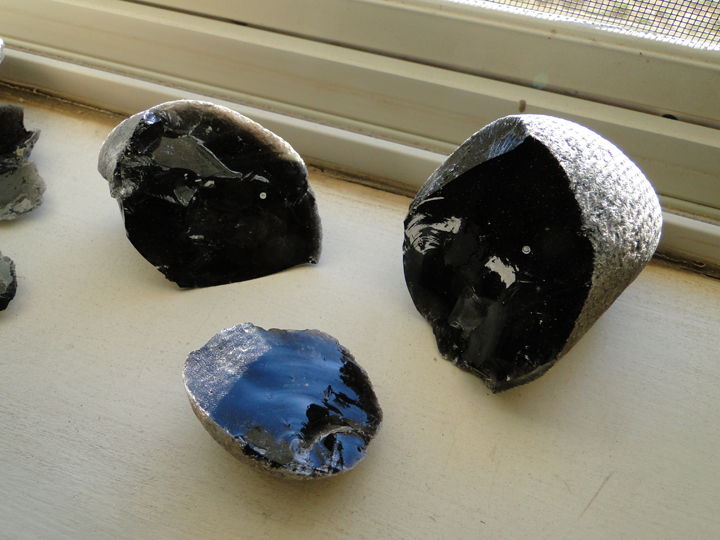

As an interesting science note, I once melted a small chip of obsidian in my kiln thinking to make cast blanks for knapping, and it turned into a large hardened nodule of foamed glass, expanding like popcorn. Is a flint knife better than an obsidian knife A knife made using. Thus, to cut obsidian, you’d need to use a strong saw. This moderate hardness places Obsidian in the same hardness level as apatite, and just below quartz and feldspar.

Obsidian has a hardness of 5 Mohs, with one harder variety which is basalt glass, and it has a hardness of 6 Mohs. Obsidian is already soft enough to knap readily, and has to be treated like a lady (however, she can sometimes be a nasty bitch!). The thin and sharp blade edge can easily cut tissue cells ripped by the best steel blades. Step 3: Choose a Suitable Cutting Device. You'll just end up with a very brittle tempered glass. Most flints, cherts and novaculite need cooking to tame them, but you don't want to cook obsidian. Here's a link to a small tutorial on my web site describing the process in more detail: On the cellular level an obsidian knife can cut between cells rather than tear the cells as a steel knife will do. Otherwise you can sit there for ten minutes trying to find where you left off. Good quality obsidian fractures down to single molecules which can produce a cutting edge 500 times sharper than the sharpest steel scalpel blade ('American Medical News', Nov. Oh yes, don't lose your place as you're working around the ribbons.
#Cracked obsidian scalpel cracked
The item was wrapped in bubble wrap but was cracked when I received it. Once all of that is done, I use a piece of maroon ScotchBrite pad in a mandrel in my Foredom to clean the overburn/scorching from the ribbons, being careful not to take too much off or the dark color in the burned areas will disappear. This listing is for ONE (1) Gold Sheen Obsidian Knife - Sun and Moon Handle. This leaves the edges of the ribbons with a nice smooth edge. With either the small or the large dimples, I only burn away one side of the line. That makes much larger dimples, almost like a hammered iron effect. For the larger obsidian knife, I just used a regular tip that is like a bent thick wire. For instance, because of how sharp they can be, obsidian scalpels cause much less trauma to flesh that they slice through, resulting in faster healing. In fact, despite a lack of FDA approval, some surgeons routinely use obsidian scalpels as they have some significant advantages over their steel counterparts. For the little knife, I used a tip I altered so there is a little tiny point on it for tiny dimples. An obsidian blade can hold an edge of just 30 angstroms, making it sharper than any modern scalpel. There's a little madness to my method here, since the paper keeps the interior of the ribbons from scorching. I use a small knife edged burner to outline the knots, burning right through the paper. Then I glue the finished pattern onto the wood with rubber cement (so I can get it off later). The basic process I use for the pyrography is this: scan the knife handle into the computer, and use printouts of that to develop the knotwork.


 0 kommentar(er)
0 kommentar(er)
